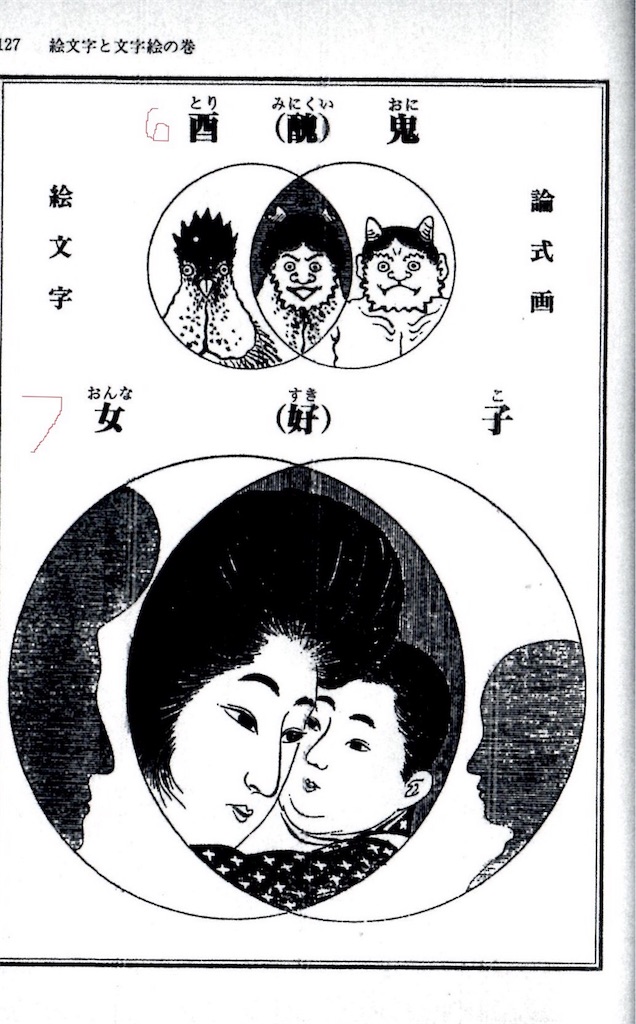宮武外骨:諷刺の世界へようこそ!Miyatake Gaikotsu: Welcome to the world of satire

宮武外骨(みやたけがいこつ)1867-1955。ジャーナリスト、文化風俗研究家、新聞雑誌研究家。香川県生まれ。明治20年「頓智協会雑誌」を創刊後、「滑稽新聞」「スコブル」など多数の雑誌や奇書を刊行し、反骨と風刺諧謔(かいぎゃく)に富む奇人として知られる。権力揶揄による入獄四回、罰金、発禁などの筆禍は29回に及ぶ。東大に明治新聞雑誌文庫を創設、主任を務める。
出所:「滑稽漫画館」、出版:河出文庫
Miyatake Gaikotsu, 1867-1955. Journalist, culture and folkways researcher, newspaper and magazine scholar. Born in Kagawa Prefecture, Japan. Published the "Witty Fellowship Magazine" in Meiji 20 (1887), followed by the "Hilarity Times Newspaper", "Tiptop", and a number of magazines and unusual volumes. Known as an eccentric who was fiercely defiant of authority and possessed a great satirical sense of humor. His belittling and ridiculing of figures in government landed him in jail four times. He was also forced to pay numerous fines, and his publications were banned a total of 29 times on account of the nature of the articles they contained. He founded the Meiji Shinbun Zasshi Bunko (Meiji Newspaper and Magazine Resource Center) at Tokyo University and served as its chief supervisor.
Source: Kokkei Mangakan, published by Kawade Bunko.

明治から大正の日本の風刺は今も生き生きしています。ここで宮武外骨の出版雑誌の一つであった「滑稽新聞」からの一部を抜粋して紹介します。この抜粋では宮武が漢字の「意味深い滑稽さ」を取り上げつつ、ある字の組み立てに置いて女性を貶す意味合いが潜められているではないかを読者に問い掛けていると思います。是非、外骨が垣間見させてくれる「当たり前の斬新さ」を楽しんでください。
The satire from the Meiji and Taisho eras (1868-1926) in Japan still rings through today. Here I have taken an excerpt from one of Miyatake Gaikotsu’s publications, the "Hilarity Times Newspaper". In this excerpt, Miyatake takes a look at the deep yet hilarious aspects of kanji. At the same time, I also feel that he is confronting readers with the fact that the elements of certain kanji seem to implicitly belittle women. I hope you all enjoy the “fresh new take on the ordinary” that Gaikotsu invites us to see.
Encyclopedia of Interpretative Kanji Treasures

(1)
(Man) Hey, it looks like you have more than one husband.
(Woman) That’s right. Just between you and mean, I actually have two.
Isn’t that why the character for husband is the combination of person (人) and the number two (二) (人 + 二 = 夫).
(2)
(Person 1) A man and woman engaged in an illicit affair have a child out of wedlock. Which one will be most satisfied with the fruit of their shenanigans?
(Person 2) Why the woman of course. When you breakdown the character for "happy" (嬉), it means "woman (女) rejoices (喜)."
(3)
(Person 1) When it comes to men and women, who do think is the most lecherous lot?
(Person 2) Definitely the women. Just take a look at the character for "to like" (好き). It’s a combination of the character for "woman" (女) and "child (子)".
(4)
(Person 1) "This (此) string (糸) is neither red nor blue. Exactly what color is it?
(Person 2) That’s what they call "purple" (紫).
(Person 1) Say, what’s "that" (其) rock (石) over there?
(Person 2) Don’t pretend like you don’t know. That’s a "go" (碁) stone*.
(5)
(Person 1) It seems that the bride-to-be (嫁) is always carted off to her waiting groom (婿方) at night time.
(Person 2) Of course it’s always at night! If they went carting her around in the daytime some envious fool would do something rash to hold up the parade. Take a look at that character for "marriage" (婚). There’s no coincidence that it’s written as "woman" (女) comes at "nightfall" (昏).

(6)
Chicken (酉) + Demon (鬼) = Ugly (醜)
(7)
Woman (女) + Child (子) = Like (好)
*Go: A board game which originated in ancient China that is widely played throughout East Asia.

武器で「構成」されている「平和」
The kanji characters for peace (heiwa) made up of weapons.